Search the Special Collections and Archives Portal
Search Results
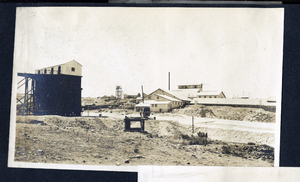
Photograph of mine buildings, Goldfield (Nev.), 1900-1920
Date
1900 to 1920
Archival Collection
Description
Photograph of mine buildings, Goldfield (Nev.), 1900-1920
Image
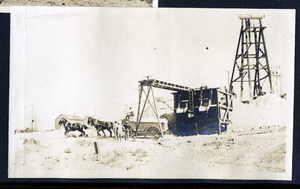
Photograph of ore being loaded into wagons, Goldfield (Nev.), 1900-1920
Date
1900 to 1920
Archival Collection
Description
Photograph of ore being loaded into wagons, Goldfield (Nev.), 1900-1920
Image
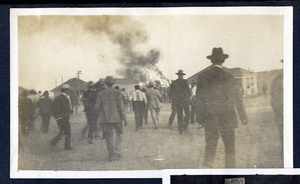
Photograph of the Goldfield Hotel fire, Goldfield (Nev.), November 17, 1906
Date
1906-11-17
Archival Collection
Description
Caption: Hotel Goldfield destroyed by fire Nov. 17th 1906
Site Name: Goldfield Hotel (Goldfield, Nev.)
Site Name: Goldfield Hotel (Goldfield, Nev.)
Image
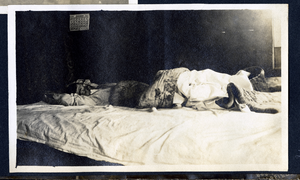
Photograph of a man at home sleeping, Goldfield (Nev.), 1900-1920
Date
1900 to 1920
Archival Collection
Description
Identified as: Jeff
Image
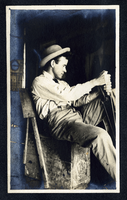
Photograph of a man working machine levers, Goldfield (Nev.), 1900-1920
Date
1900 to 1920
Archival Collection
Description
Photograph of a man working machine levers, Goldfield (Nev.), 1900-1920
Image

Photograph of a man working machine levers, Goldfield (Nev.), 1900-1920
Date
1900 to 1920
Archival Collection
Description
Photograph of a man working machine levers, Goldfield (Nev.), 1900-1920
Image

Photograph of a man walking towards houses, Goldfield (Nev.), 1900-1920
Date
1900 to 1920
Archival Collection
Description
Photograph of a man walking towards houses, Goldfield (Nev.), 1900-1920
Image

Photograph of a monkey on a picket fence, Goldfield (Nev.), 1900-1920
Date
1900 to 1920
Archival Collection
Description
Photograph of a monkey on a picket fence, Goldfield (Nev.), 1900-1920
Image

Photograph of prospectors and a burro, Goldfield (Nev.), 1900-1920
Date
1900 to 1920
Archival Collection
Description
Caption: R.J. Shoemaker, Tom Short
Image
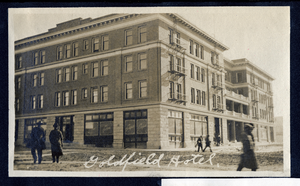
Photograph of the Goldfield Hotel, Goldfield (Nev.), 1900-1920
Date
1900 to 1920
Archival Collection
Description
Caption: Goldfield Hotel
Site Name: Goldfield Hotel (Goldfield, Nev.)
Site Name: Goldfield Hotel (Goldfield, Nev.)
Image
Pagination
Refine my results
Content Type
Creator or Contributor
Subject
Archival Collection
Digital Project
Resource Type
Year
Material Type
Place
Language
Records Classification
